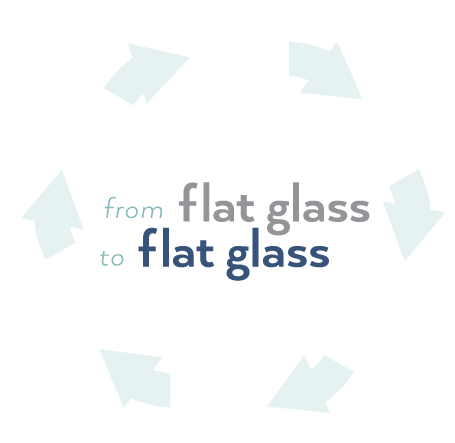
Recycling
- Home
- Recycling
Recycling is a priority of the flat glass sector
Recycling is one of the most prominent ways to improve manufacturing sustainability by way of reducing the use of virgin raw materials, limiting energy consumption and reducing overall CO₂ emissions from flat glass manufacturing. The increased use of recycled glass is therefore essential to maximize the sector’s contribution to the EU climate-neutrality objective. The flat glass industry is calling for the creation of a closed-loop recycling system in which broken or waste flat glass – known as cullet – can be sorted, collected and returned to flat glass furnaces.
Recent efforts of the industry have led to an increase of the average share of cullet used to produce flat glass in Europe from 20 to 26% between 2010 and 2018. Despise this substantial increase, the untapped potential remains substantial today: only 5% of flat glass from construction and demolition projects is recycled nowadays. To reverse this situation, it is essential that the end-of-life glazing is dismantled, sorted and sent to a recycling route for this waste to be transformed into a valuable resource. Should all end-of-life glazing be recycled into flat glass in Europe, the percentage of cullet used to produce new flat glass products could be increased to roughly 40%, compared to today’s 26% average.
This dedicated page gathers all our resources on the recycling of flat glass and will be regularly updated with the latest news on the topic.





Dismantling
Windows and/or glazings are dismantled from building before replacement (renovation) or demolition.


Collecting
Windows and/or glazings are collected separately from other building products.


Separating
Glass is separated from other window components (aluminium, plastics, wood, etc.).


Cleaning
Glass is cleaned from impurities to fulfill end-of-waste criteria. Once cleaned, ‘Cullet’ from building glass should primarily be used in flat glass making (closed-loop recycling). Depending on the ‘cullet’ quality, it can be recycled in other glass sub-sectors.


Reintroducing
‘Cullet’ is introduced in furnaces to produce new glass with minimal environmental impacts: lower energy consumption, less virgin raw materials, less CO2emissions.


